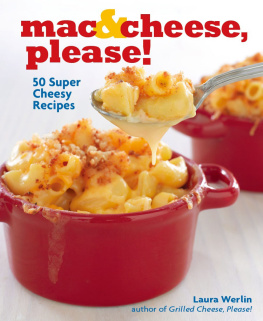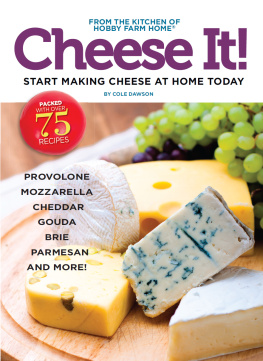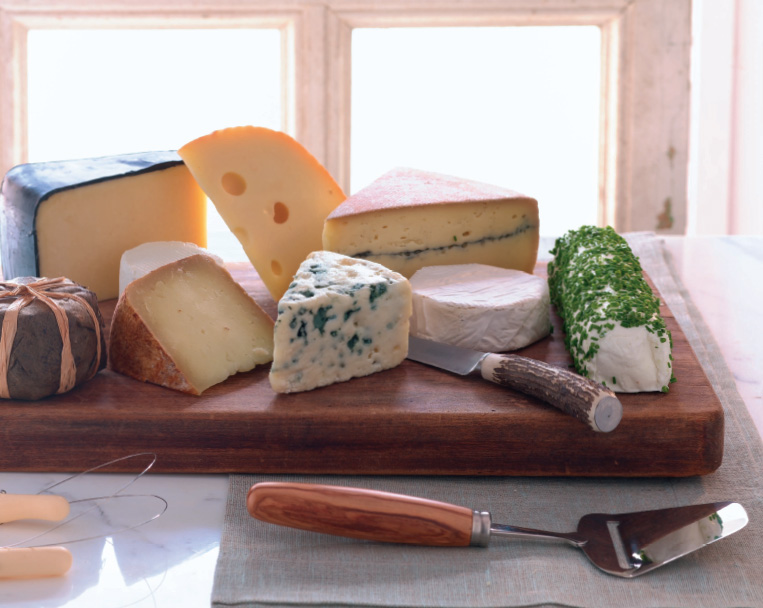
DEDICATED TO MISS HELOISE WINGS,
WHO CONTINUES TO BE MY CONSTANT SOURCE
OF INSPIRATION AND JOY
The Harvard Common Press
535 Albany Street
Boston, Massachusetts 02118
www.harvardcommonpress.com
Copyright 2008 by Hallie Harron
Photographs copyright 2008 by Jerry Errico
All rights reserved. No part of this publication may be reproduced or
transmitted in any form or by any means, electronic or mechanical,
including photocopying, recording, or any information storage or retrieval
system, without permission in writing from the publisher.
Printed in China
Printed on acid-free paper
Library of Congress Cataloging-in-Publication Data
Harron, Hallie.
Cheese hors d'oeuvres : 50 recipes for crispy canapes, delectable dips,
marinated morsels, and other tasty tidbits / Hallie Harron.
p. cm.
Includes index.
ISBN-13: 978-1-55832-371-1 (hbk.)
1. Appetizers. 2. Cookery (Cheese) I. Title.
TX740.H24 2008
641.8'12--dc22
2007046211
Special bulk-order discounts are available on this and other Harvard
Common Press books. Companies and organizations may purchase books
for premiums or resale, or may arrange a custom edition, by contacting
the Marketing Director at the address above.
Book design by Matthew Bouloutian and Vivian Ghazarian
Photography by Jerry Errico
Food styling by Brian Preston-Campbell
10 9 8 7 6 5 4 3 2 1
Acknowledgments
Thank you again and again, Jay and Fran London, my cheese heads from Arizonafor the testing help, the hints, the tips. Gary and Marilyn Litt, both in the States and in our village, Mollans, merci bien for all those wonderful hours spent exploring cheese combos! Hats off also to Jo Weible, another excellent cook; thanks for sharing your wise insights and family recipes. And lastly and so importantly, thanks to Mary Evans, for that constant moral and recipe support. Thank you to all!
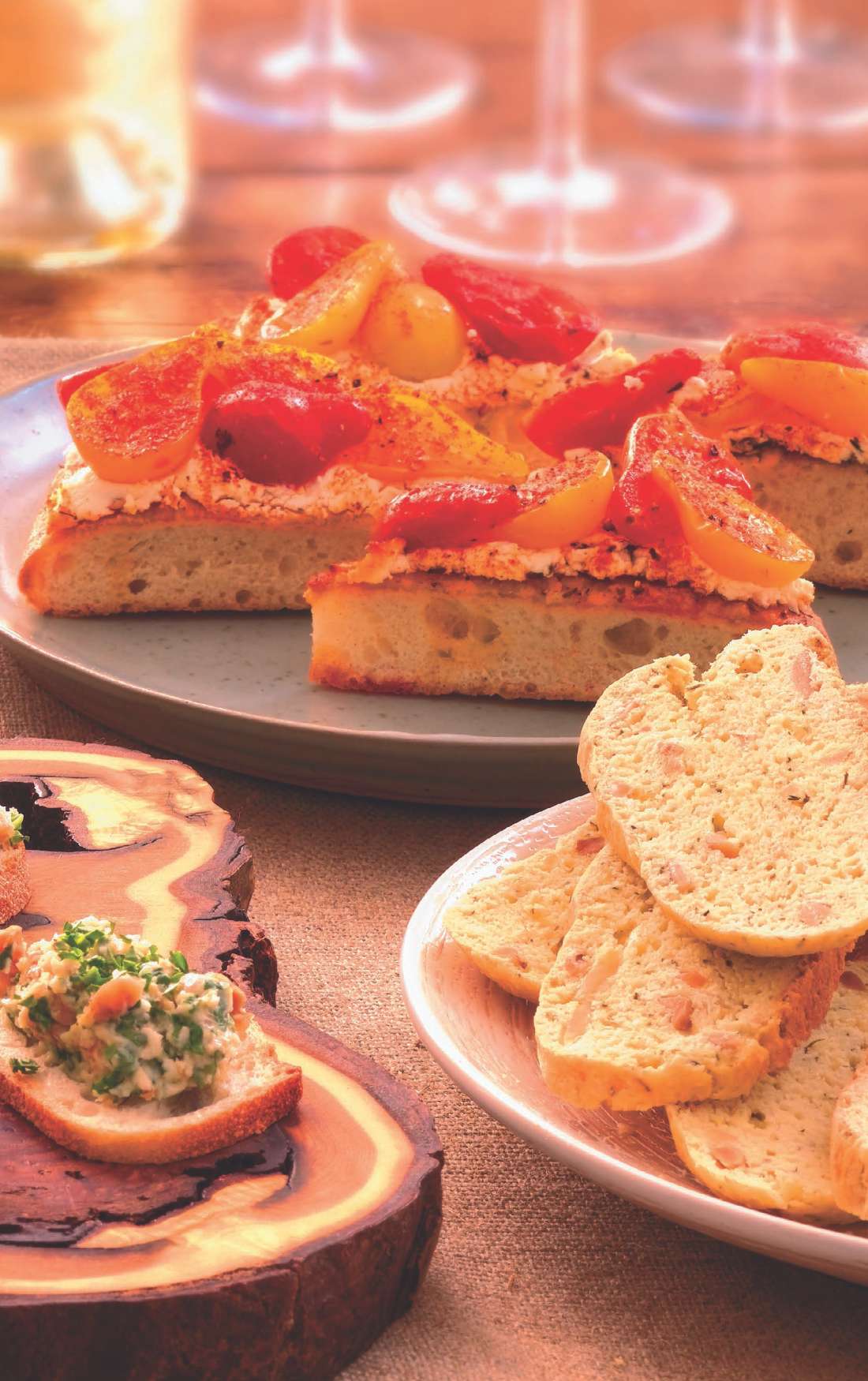
CHEESE BASICS
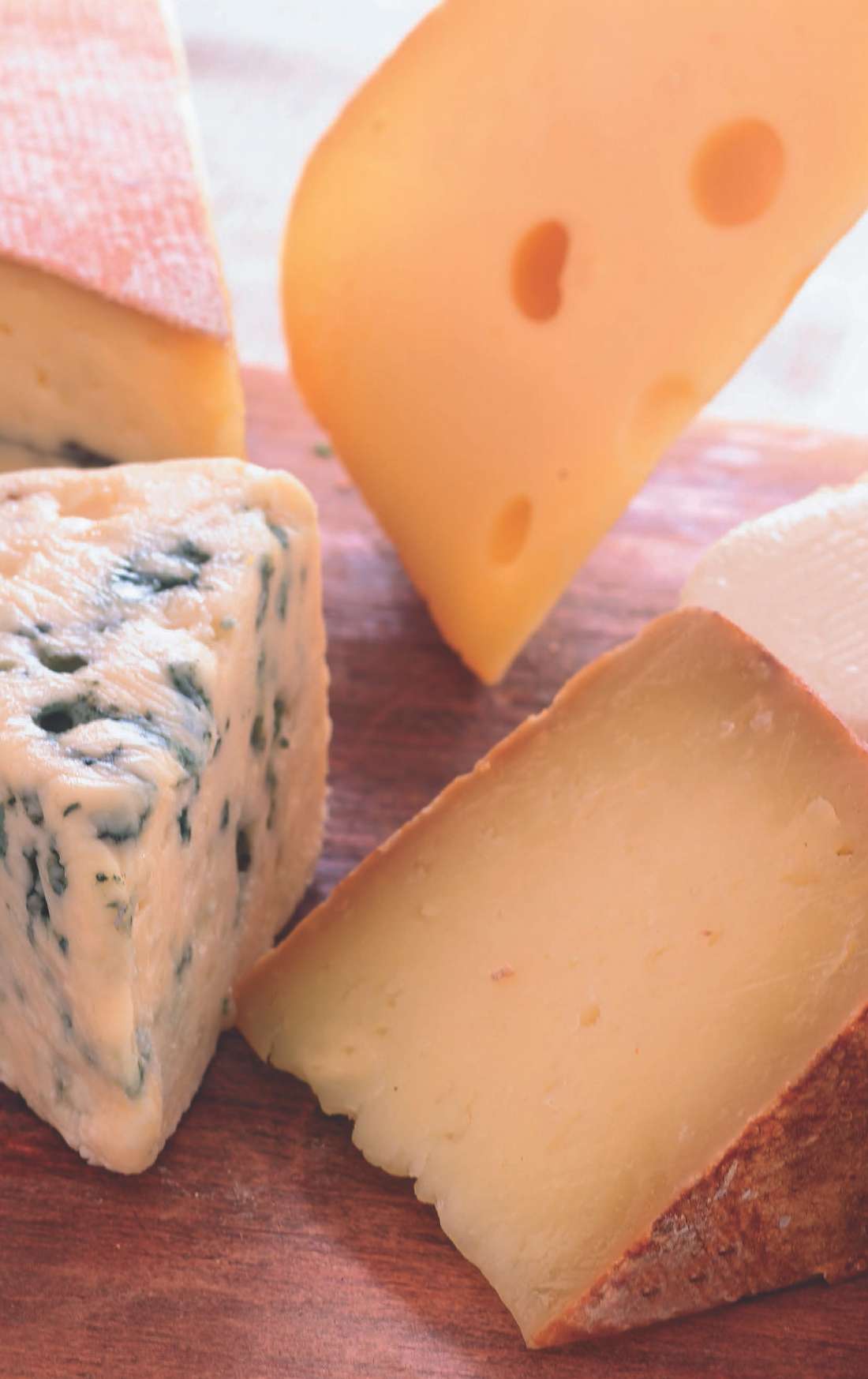
So many cheeses, so little time! There's more to it all than just say cheese! With so many choices of local and imported cheeses, how do you know where to begin? That's where I come in. Read on to get a few basics under your belt, like understanding the terms on cheese labels, as well as the basic varieties and textures of domestic and imported cheeses. With that information in hand, along with knowing which cheeses are best simply eaten and which take well to cooking, and suggestions for what kinds of cheese to serve when and with what, you'll be on your way to being a cheese maven before you know it.
Here are a few helpful hints to get you started.
- Go native. That is, head to your local cheese shop and begin there. Ask for opinions, suggestions, and samples, and try them all; a good cheese or gourmet shop will happily provide samples to help you decide. Most cheeses start from cow's, goat's, or sheep's milk. Start with a sampling of all three types. Begin with mild-tasting cheeses and move along the spectrum to more fragrant, older, moldier, and sturdier cheeses. Then start making choices of your own.
- Go for different colors and shapes. Try fresh, pristine white rounds alongside gray, blue, orange, and yellow logs, squares, and pyramids. And try different textures! Look for soft, creamy, semi-runny cheeses, as well as firmer slicing and harder grating cheeses. Cheese labels often indicate soft, semi-soft, semi-firm, and firm.
- Go global. Many supermarkets and certainly a good cheese shop will offer you choices from around the globe. Start at home and look for any local cheesemakersartisanal cheesemaking is growing in the United States. Often you can mail-order wares from cheesemakers in other states. Then branch out to France, Italy, Spain, Germany, Switzerland, England, Mexico, Canada, New Zealand, etc. The list goes on to include all the variations and different regional choices within countries, so be prepared for a delicious and endless frolic.
Cheese mavens, just like wine lovers, often use specialty cheese lingo for different textures. It's handy to become familiar with a few of them, so take several moments to become friends with these few terms.
- Soft: These cheeses are usually "right out of the hopper" and have been aged for a very short period of time, if at all. Some locally made cheeses can even be eaten with a spoon, as you would yogurt. Soft cheese also refers to types that are spreadable, such as Camembert or Brie.
- Semi-soft: This refers to an aged cheese that is still moist. It can be either spreadable when cut, such as a young Bel Paese, or crumbly, such as many domestic blues. Both are labeled "semi-soft."
- Semi-firm: This is a cheese that slices evenly, such as Madrigal Swiss, Jarlsberg, cheddar, or Monterey Jack. These are best cut into wedges, cubes, or paper-thin slices.
- Firm: This can also be considered a "slicing" cheese or, if really firm, can be used for grating, such as a Parmesan, aged Asiago, Jack, or manchego.
- Whey cheese: Some cheeses are produced by cooking and reducing the whey. Perhaps the most common of these is ricotta ("re-cooked") cheese. Another whey cheese is Norwegian Gjetost, where the liquid is boiled down to produce a caramelized brown product.
- Pasta filata: Italian mozzarella, provolone, and caciocavallo are the best examples of the cheesemaking technique called pasta filata. The term, which means "spun paste," refers to the process of kneading and stretching the curds into various shapes and sizes of cheese.
The rind is a protective coating that keeps the cheese from drying out. Types of cheese rinds are:
- Natural: A natural rind that simply forms as the cheese ages can be almost indiscernible until the cheese is really mature. Most blue cheeses, goat cheeses, British farmhouse cheddar, Cheshire, and Gloucester have natural rinds.
- Bloomy: A bloomy or "flowery" rind indicates that the cheese has developed mold on the surface. This is visible on soft ripening cheeses, and these cheeses normally have a white coating. Examples are Camembert and Brillat-Savarin.
- Washed: A washed rind has literally been washed in some sort of liquid, such as wine, brine, beer, or a strong spirit. The resulting cheese is often sticky on the outside. You'll also find that the rind may be dipped in one of a wide variety of ingredients such as natural ash, herbs, or spices. Tallegio, Munster, Epoisses, and Belgian Chimay are all washed-rind cheeses.
What about Pasteurized versus Raw Cheese?
Contrary to what many people think, raw-milk, or unpasteurized, cheeses are not totally uncooked; they are simply heated to a lower temperature than are pasteurized products. The milk for these cheeses is heated to less than 100F. They can be young or aged. At the present time, we in the United States are unable to purchase raw-milk cheeses that have been aged for less than 60 days, whereas in Europe, younger raw-milk cheeses are widely available.
When the milk has been heated to over 145F for a specified amount of time, this qualifies it as a pasteurized product with no possible harmful bacteria. However, cheesemakers generally agree that heating the milk to a higher temperature can compromise the flavor. Small producers, especially in Europe, often use a longer and more flavorful (and lower yield) low-heat approach to production.
Next page



